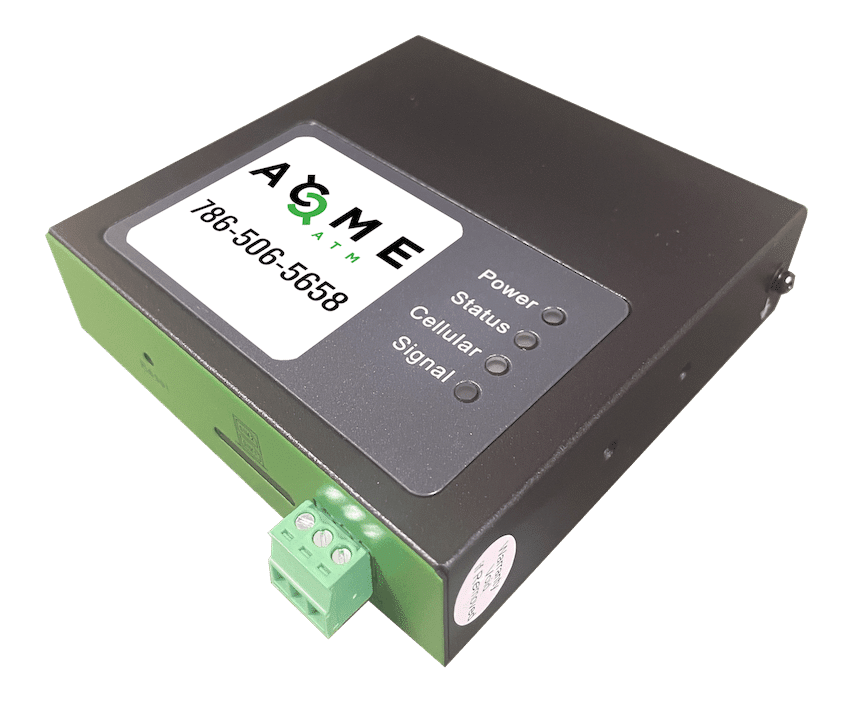The I-22 has a management portal packed with features that make it easier than ever to manage your ATMs. Forecast earnings, cash levels, and maintenance needs. Activate modems, configure payment processors, reboot ATMs, and more. The InHand I-22 is also an IP-only device so you can use Verizon or ATT as your network. It has 4GLTE to ensure fast transactions and no interruptions. It also includes remote restart features and geolocation to ensure you can keep it up and running, even if you’re not nearby.
InHand I-22
Contact For Device & Subscription InfoSeamless connectivity and enhanced reliability
The InHand I-22 is a revolutionary wireless ATM solution designed to provide seamless connectivity and enhanced functionality for your business. This innovative device is not only an affordable option but also comes packed with advanced features that make it stand out in the market.


Frequently Asked Questions
Setting up and configuring a wireless ATM modem involves several key steps. First, install the modem within the ATM machine according to the manufacturer's instructions, ensuring proper placement and secure connections. Next, establish a connection with the available wireless network (Wi-Fi, cellular, or satellite) and access the modem's settings via a web-based interface or manufacturer-provided software. During configuration, input relevant network credentials, set up encryption and authentication protocols, and adjust any additional security features as needed. Once these settings are in place, the modem should establish a secure connection with the bank's server, allowing the ATM to operate wirelessly and efficiently. Regular maintenance and updates of the modem's firmware and settings are essential to maintaining optimal performance and security.
Although wireless ATM modems are primarily designed to establish dedicated, secure connections between individual ATMs and the bank's server, some modem models may support connections to multiple devices simultaneously. Additional devices like nearby ATMs, security cameras, or even digital signage systems can be connected to the modem. However, it is crucial to ensure that the modem's capacity and data transmission speed is sufficient to handle the extra traffic without affecting the performance of the connected devices or compromising security.
While wireless ATM modems offer numerous benefits, they can also introduce potential security risks. Wireless data transmission can be more vulnerable to interception or tampering by cybercriminals, compared to wired connections. To address these risks, wireless ATM modems employ advanced encryption and authentication protocols, such as SSL/TLS, to secure sensitive financial data during transmission. In addition, financial institutions implement supplementary security measures, including firewalls, intrusion detection systems, and regular security audits, to further protect their networks and maintain the integrity of transactions.
Wireless ATM modems are designed to support a range of wireless connectivity options, which may include Wi-Fi, cellular networks (3G, 4G, and 5G), and satellite communication systems. By supporting multiple connectivity options, these modems can adapt to different environments and select the most suitable connection method based on factors such as signal strength, network congestion, and data transmission speed. This ensures that the ATMs remain connected and functional under various conditions, enhancing their reliability and performance.
There are several advantages to using a wireless ATM modem. First, by eliminating the need for a wired connection, wireless modems allow ATMs to be installed in a wider variety of locations, including remote or unconventional areas. This increases customer accessibility and convenience. Second, wireless modems reduce installation and maintenance costs, as there is no need for expensive cabling or infrastructure work. Third, wireless connections can offer faster and more reliable connectivity compared to traditional wired connections, resulting in improved user experience and reduced ATM downtime. Finally, the use of wireless technology allows for more efficient remote monitoring and management of ATMs by financial institutions.
A wireless ATM modem functions by converting the digital signals generated by the ATM into radio waves. These radio waves are then transmitted wirelessly to an access point, cellular network, or satellite system, depending on the available connectivity options. Upon reaching the bank's server, the modem establishes a secure connection using encryption and authentication protocols to protect sensitive financial data during transmission. In addition to sending data, the wireless ATM modem also receives information from the bank's server, allowing the ATM to perform various tasks such as dispensing cash, updating account balances, and processing transactions.






